Transcript – How to Get Attention on the Web – What DOESN’T Work!
Paula Williams: Welcome to Aviation Hanger Flying Episode number 38. Today we’re talking about how to get attention on the web. We’ve got a three part series starting with today’s episode, what doesn’t work.
John Williams:
Paula Williams: Exactly, so I’m Paula Williams.
John Williams: And I’m John Williams.
Paula Williams: And we are ABCI. And ABCI’s mission is-
John Williams: To help all you ladies and gents out there sell more stuff in the aviation world.
Paula Williams: Exactly, and the web is a big part of that. And to that end if you’d like to join in the conversation we’d be happy to talk with you on the web.
Please use #AvGeekMarketing. That’s AvGeekMarketing and we promise we will reply to every Tweet or comment that we could find. All right, so to start with, why are websites important?
John Williams: [LAUGH] Well there’s a number of reasons if you think about it.
Paula Williams: Right, I mean when we started getting into this we thought we were going to be the first and only digital marketing company.
Solely digital marketing company in the aviation industry, as it turned out, that didn’t work out so well because aviation at the time wasn’t ready for it. This was the 2006, seven era [LAUGH] and at this point even we found that solely online advertising, especially the aviation industry doesn’t work as well As a combination.
But websites are still incredibly important. Aren’t they, John?
John Williams: Absolutely, it’s one of the least expensive ways. Well, I’m not sure that’s actually true anymore. But it’s less expensive than a whole number of other things in how to get some advertising out in front of people.
Paula Williams: Exactly, so it’s a lot less expensive than the Paper Directory Ads that people used to use, and a lot more global than Paper Directory Ads.
In fact, many organizations that used to publish a member of directory like NBAA, they don’t do that anymore. They don’t publish a paper ad, or a Paper Directory, they just have the online Directory on their website that nobody ever looks at.
John Williams: But it gives them more control, too.
Paula Williams: Right, that’s true. It can be updated more often, it’s less expensive. There’s lots of reason that people have stopped doing a lot of those paper directories, that people used to depend on in the industry, right?
John Williams: Mm-hm.
Paula Williams: And there’s still things like controller, and other things that are mainly paper based, but even they depend really heavily on the web these days because those things need to be updated all the time.
John Williams: Yes they do.
Paula Williams: All right. Also, 79% of buyers will research you online before they agree to meet with you, even if they got a mailer, meaning a post card or something else. So even if you’re using direct mail as your means of advertising, people are going to look that up and see what they can find out about your company on the Web.
So even if your website isn’t your primary means of advertising it’s still really important.
John Williams: Yes.
Paula Williams: All right, okay, and then the other thing is that your website is the only online media. That you control completely.
John Williams: No joke, everybody else got thrown the rules and terms of service, and they could go away.
But your website’s there as long as you’re willing to pay for it.
Paula Williams: Exactly, you could always find a new host for your website, but you control that real estate. It’s like owning versus leasing the building you do business in.
John Williams: And not only that, you don’t like any of the hosts out there, buy a computer and get some assistance and do it yourself.
Paula Williams: I wouldn’t recommend that. [LAUGH]
John Williams: Me neither, but you could do it.
Paula Williams: The point is that it’s something that you own and you control. And if you host any other type of online material, On Facebook, then Facebook controls it, right?
John Williams: That’s right.
Paula Williams: Controller, then Controller controls it, literally.
John Williams: Right.
Paula Williams: What other ads that they put next to your materials, what context they provide, what formatting you’re allowed to do all of that stuff? Is really up to that third party and the more you control about your own business the better, right?
John Williams: Absolutely.
Paula Williams: All right, okay, so because you have to have a website you might as well make it as effective as possible.
John Williams: [LAUGH]
Paula Williams: Do we agree on that?
John Williams: Sure.
Paula Williams: [LAUGH] Okay, and by effective. What I mean is that it should be bringing you qualified leads, and that’s really it was down to. It’s not really about how much traffic you get, it’s not really about any of the numbers we’re going to talk about.
You know, what it really boils down to is bringing you qualified leads. That’s the end goal, and we agree on that?
John Williams: Right, but you back that up, and it has to be traffic, but it needs to be specific traffic, qualified traffic.
Paula Williams: Exactly, okay, so we’re gonna go in the way back machine.
John Williams: [LAUGH] Is that right?
Paula Williams: There really is a Wayback Machine. On the web it’s at web.archive.org and you can actually go into the Wayback Machine and you can put in any website you’d like. And it will have different dates that they had archived that website, and this is our oldest website, actually, my oldest website.
I think this was when we first barely, we even knew each other when I put this together.
Paula Williams: And this was Ravenwerks Originals. This was the very first website that I put together just as I was learning HTML and getting a clue.
John Williams: We actually met at a client site that both of our companies had us at, and they threw us together into project together, and they’ve made me the project lead on this thing.
And just by chance the day before she’d say look at this, see what I did on the web? So now I have five people on my team to put together this project and none of them save her Had done any work like that on the web, so I said, you’re it.
Paula Williams: Right.
John Williams: [LAUGH]
Paula Williams: [LAUGH] So, and it started kind of as a lark, I heard.
John Williams: I thought it was a raven.
Paula Williams: Well, that is a raven, exactly. [LAUGH] I’d heard a lot about how online advertising was important, and I was in marketing, and wanted to.
Learn this and get to know it. So I put together this website, wasn’t really sure where it was going or what we were doing with it, just wanted to explore some of the possibilities. So what you’re seeing here, Ravenwerks Originals, is a site that we really didn’t know or I really didn’t know what I was gonna do with it.
I just wanted to see if I could get something on the web. And-
John Williams: You did.
Paula Williams: Yeah, exactly. So this is 1998, January of 1998, and you can see we were just getting to the point where we could do graphics on the web, and do some animated graphics and other things.
So we kind of overdid that.
John Williams: A little bit of interesting note, sidenote possible. At the point in time in which she did this there were only, what? 3 million total website son the web.
Paula Williams: Right, we’re gonna get to that in just a minute.
John Williams: Nevermind.
Paula Williams: That’s okay.
John Williams: Don’t want to steal your thunder.
Paula Williams: That’s okay, no, but seriously. Things worked differently back then, and if you have an older website, the reason that we’re going through this history lesson really, is to explain some of the things that worked then, that don’t work now, and why.
John Williams: Precisely.
Paula Williams: Why is that the case, right? Okay, so January 1998, we had not done anything except slap this website on the Internet with no advertising no search engine optimization, no nothing. Just had a little bit of content on it that was not even very focused. It wasn’t focused on a particular line of business it wasn’t focused on art which is part of what that was about.
It wasn’t focused on business ethics which is something that I was studying. And it wasn’t you know, in anything in particular it was just kind of a little bit of everything. It’s mishmash of stuff. But you could see we were getting about 800 somewhere in the neighborhood of few less than 800 user sessions per day.
Having done nothing.
John Williams: Yeah, right?
Paula Williams: So, that was kind of insane. And we kind of got this crazy idea that we were really good at this.
John Williams: [LAUGH] Not lucky.
Paula Williams: Right, exactly. Which, at the time we were. And we started doing some web work. We started doing websites for KODJ, radio, and Salt Lake City.
Dickie and Angel Shannon hired us to do some trivia quizzes for oldies music. All kinds of cool stuff that we were just having fun and exploring, and we didn’t have to do anything like search engine optimization. We also started working for a company that did advertising novelties and did all kinds of stuff.
And all we had to do was slap pages up on the internet. And we will get this kind of traffic, crazy?
John Williams: Yup.
Paula Williams: Here’s why it worked, right? In 1998, there were only 3 Million in changed websites on the internet, right? But then in subsequent years that doubled and tripled and quadrupled and you know, got completely crazy to the point where is Very very close to one billion websites today.
I don’t know if it’s actually passed one billion yet.
John Williams: I don’t know but that’s the reason they went to ITV six.
Paula Williams: Mm-hm.
John Williams: Gives you a lot more internet protocol or ITP addresses.
Paula Williams: Exactly. So it kind of A completely different world where you’re competing in a world of 3,000 in, sorry [LAUGH] 3 million, the entire Internet versus 1 billion in the entire Internet, or more.
So, you’re literally looking at a needle in a haystack kind of a scenario where there are so many sites being launched every single day on any topic you can even imagine, and no matter how nichy your expertise. So if you do aviation software, there are probably hundreds Maybe thousands of websites about that.
If you do aviation maintenance software there are maybe hundreds about that. If you do aviation maintenance software that is specific to one particular type of maintenance there is probably several sites that you’re competing against and you really want to be in the top ten. In order to be found.
So whatever niche you have, there’s probably hundreds that you’re competing against.
John Williams: It’s kind of interesting on how you make that needle in a big haystack shine.
Paula Williams: Exactly. So we need a magnet, right? [LAUGH]
John Williams: Dang big one.
Paula Williams: Dang big one, right. Okay so how are you going to stand out?
You know how are you actually going to get attention when you’re such a small thing in such a big stack of things right. So we’re going to talk about a couple of examples that did it wrong. Okay.
John Williams: Yes.
Paula Williams: All right, first one this is and aviation software company we met then in 2009.
Right when they were really unhappy with marketing people.
John Williams: [LAUGH]
Paula Williams: Sometimes this happens. When you work in a profession. A friend of mine does my hair and he ends up fixing a lot of bad haircuts. Right? We do marketing so we end up fixing a lot of bad marketing.
[LAUGH] So it’s the same thing whatever profession you’re in. It’s very likely that you end up fixing bad haircuts, whatever the bad haircut is of you profession. So, the bad haircut that came to us was an aviation software company. That had spent $250,000, that’s a quarter of a million dollars.John Williams: Exactly.
Paula Williams: On a beautiful website design. And it was beautiful. I have to give them that. It was visually stunning. They had really generous video. They had a very nice catalog on their website, it was beautiful. But, nobody was seeing it, there were less than a 100 visitors per week and most of them were foreign.
John Williams: So, suppose you spent quarter million bucks on an airplane without a motor in it
Paula Williams: Mm-hm?
John Williams: You would not be happy.
Paula Williams: No, you would not be happy. And they made zero sales that were attributable to the website. So this is a problem.
John Williams: [LAUGH] You think?
Paula Williams: Her thought had been, if we make a beautiful enough. Our way of standing out as the needle in the haystack. Is to make something that is more gorgeous than everything else, than every other needle in the haystack. But you know what? Nobody even knew that it was gorgeous-
John Williams: Because they didn’t know it was there.
Paula Williams: Right, so you can spend an awful lot of money on site design and that has absolutely no bearing on how many people see it. It’s like having the Mona Lisa in somebody’s closet, somewhere in the world that nobody’s ever going to see it.
It doesn’t matter how beautiful or how famous or fabulous it is, what matters is where it is and how many people are actually going to appreciate it, right?
John Williams: Well that was seven or eight years ago, so 250,000 then would be significantly more than that now.
Paula Williams: Exactly, so our job with this website, obviously, was not to change anything about the design.
But certainly, to change the number of people that saw it.
John Williams: Qualified people that saw it.
Paula Williams: Qualified people that saw it. So that was a pretty clear example that good design isn’t going to help you stand out. In a credit marketplace, okay? Example number two. 2015, this is an aviation training organization that shall remain nameless, okay, and basically they hired a marketing firm that had great credentials, that had worked with Textron, and Continental, and American Airlines, A really big firm that did beautiful work.
And very credible, very beautiful branding and so on. And we’re gonna show you the actuals of what happens here. I mean the nice thing about the web is that you can see Anything you wanna see, pretty much everything is public information, right?
John Williams: Mm-hm.
Paula Williams: Okay, so little after July, 2013 they switched from ABCI to a Madison Avenue firm that also will remain nameless, and re-branded and redesigned their website.
And we happen to know some folks that worked there. And so, between about August of 2013 through let’s see that’s probably [CROSSTALK] September, October, November of 2015 they had almost continually declining web traffic except when they purchased an ad. And if you looking at graphs of web traffic and things like that you can see there’s kind of the wavy lines and there’s kind of the straight up and down lines and wavy lines usually mean organic.
Search results meaning you’ve put some great materials on your website so people start to discover it and start to share it with other people. And there’s kind of a gradual motion of up and down on that website traffic. When you purchase an ad you have almost a straight up line and when you stop paying for that ad you have almost a straight down line.
So you may start getting You know, hundreds or thousands of people visiting your website every day. But then as soon as you stop paying for that traffic it just drops off instantly.
John Williams: And you’re paying a number of dollars per each click whether they come, stay on your website or whether they Buy anything or not.
Paula Williams: Right, exactly. So you can see, they may have made their website look better, one could make that argument.
Paula Williams: Certainly, they made them a different color scheme, a different branding, and the colors on their website match the colors on their furniture in their lobby, and other fabulous things that Are good for branding.
I’m not trying to denigrate that in any way, but it certainly did not help the traffic to their website or the number of leads that were coming from the website. So they purchased an Ad you can see that in about let’s say that’s about November of 2016 and then stopped in about February of 2016.
And you can see they were able to get more traffic to their website, but I doubt they got any leads from that either.
John Williams: Yeah, we don’t know about that segment of time. The other segment between the red bars, we do know.
Paula Williams: Right, exactly. So if you’re listening to this podcast just to describe what’s happened we’ve got a really significant amount of traffic in August of 2013 that kind of gradually tapers off And then has some minor bubbles of purchased ads and other kinds of things through about July of 2015, so about a year later.
And then, they have a purchased ad that makes a really big splash and almost a pretty precipitous dropout after that. Okay, so, what did we learn from this? Basically, you can hire a very prestigious branding firm. You can do a great web design. You can do a lot of things with your website, That will make it look better, better branding.
Other kind of things that still don’t lead to more leads from our website
John Williams: Imagine if you were a brand new company like Tesla, and you put up a bunch of billboards, and Kenya.
Paula Williams: Mm-hm.
John Williams: Which you manufacture in the United States.
Paula Williams: And sell in the United States.
John Williams: [LAUGH] And sell in the United States. Pretty much, that’s what’s happening here.
Paula Williams: Exactly, it’s kind of nuts. So the neat thing is we can learn from other people’s examples and we can see what works and what doesn’t. And we agreed at the beginning of Of this podcast, the main goal of your website is obtain new leads.
John Williams: Qualified leads.
Paula Williams: Qualified leads. Exactly, so that is not doing very well. So, the moral of the story, I suppose, is that it is not a beauty contest. Obviously you want to have an attractive website. But it’s not really about looks and it’s not really about design.
It really is about the number of qualified leads that you get to your website. Okay, so when we look at the ways that you get people to your website, there are lots of ways to do that. There’s search engine optimization, which we’re gonna be talking about in the next couple of podcasts There’s social media, there’s magazine advertisements, there’s trade show appearances, there’s post cards and mailers, there’s referrals from current customers and other kinds of things.
But it isn’t just a field of dreams kind of a situation where, if you build it they will come. Remember the movie?
John Williams: Yeah.
Paula Williams: Right, [LAUGH] they won’t come, because they don’t know it’s there, okay? There’s no magic here. You really do need to put this in places where people are going to come across it and notice it, especially people that are most likely to buy your product.
John Williams: Yeah, so when they search on specific items, you want those specific items to be. Optimized in your website.
Paula Williams: Exactly, and there’s lots of ways to do that, including buying advertising, doing social media, doing a lot of different things. Search engine optimization really is one of the most cost effective ways to do this.
But it doesn’t happen automatically like it did for us in 1998.
John Williams: It is not magic either.
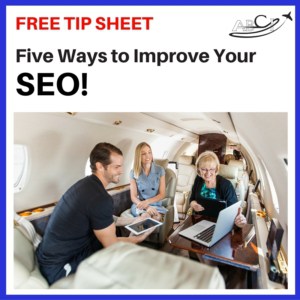 Paula Williams: No and it’s not magic, there’s no voodoo here, there is nothing of great consequence that you can’t do but we’re gonna recommend that you do some things yourself and that you ask Outsource some other things because it’s just gotten so complicated, and so competitive.
Paula Williams: No and it’s not magic, there’s no voodoo here, there is nothing of great consequence that you can’t do but we’re gonna recommend that you do some things yourself and that you ask Outsource some other things because it’s just gotten so complicated, and so competitive.
John Williams: Well and Google who’s a primary purveyor of how this works changes that our stuff, sometimes daily, at least weekly, and the big changes come monthly, quarterly, semiannually, and if you don’t have a stats to keep up with that you just can’t do it yourself.
Paula Williams: Right, so in addition to getting people to your website, the other thing that’s really important in this.
In this effort of this goal of acquiring qualified leads from your website, is that you have to have some way of people to interact with your website and give you their contact information, because you may see more traffic on your website. But you don’t know who they are, and you don’t have any way of following up with them or putting them into your sales process and continuing on with that, unless you have some way of capturing their information.
And that’s sometimes called inbound marketing. That’s sometimes called Magnetic marketing, whatever you call that, we call it a great call to action or some kind of an offer, in order to capture their information. All right, so competing for attention on the web, key points that we want you to remember today You have to have a website anyway, so it might as well be functional.
Right?
John Williams: Well, I suppose you could say they’re all functional, but you certainly want them to draw people in.
Paula Williams: Right, so functional, we agreed, means Attracting new leads and capturing their content contact information and then moving along the sales process.
John Williams: Of course, cuz if you don’t capture contact information, it doesn’t matter if they’re qualified or not.
Paula Williams: Exactly, so just having a website isn’t enough anymore. You have to do those two activities. One, drive people to it, and two, capture Capture people’s information once they get there, right?
John Williams: I’m not sure drive is the right way, but you certainly have to lure them along.
Paula Williams: [LAUGH] Okay.
John Williams: [LAUGH]
Paula Williams: Maybe not drive, but at least pull people into it, maybe that’s a nicer way of putting it. Things that worked in 1998, or 2009, or even 2014 Don’t work anymore.
John Williams: And that’s because Google keeps changing stuff.
Paula Williams: Exactly.
John Williams: That and the fact that there’s now double the number of websites that there was back then.
Or triple depending on the year.
Paula Williams: Exactly, from 3 billion to 1 billion, that’s a little more than double.
John Williams: Right, but it depends on the year.
Paula Williams: Yeah, absolutely. A more attractive design isn’t going to help you.
John Williams: No.
Paula Williams: It is not a beauty contest. So you may want to have a more attractive design.
You may have a really hideous website that may be selling things left, right and centre for you. That’s great. You may decide you want it to look better, but that is not The primary objective here is to sell more stuff.
John Williams: Yeah.
Paula Williams: Okay, cool. All right, so make sure you download our SEO tip sheet from ABCI1.com/SEO.
That’s alpha bravo Charlie India number one dot com forward slash SEO, sierra echo Oscar. Oscar. Thank you. [LAUGH] I almost forgot.
John Williams: Tongue tied on the microphone.
Paula Williams: Exactly, right. And a couple of things that you may also want to see. If you already have enough people visiting your website but you’re not capturing their contact information and you.
Aren’t really sure how to do that, you might wanna look at episode 12, about list building, capturing leads from your website, we have some ways of doing that. If you need more qualified people to visit your website, then you’re going to want to look at episode number 39, 40, and 41 On website traffic, which are coming soon, right?
John Williams: [LAUGH] Exactly.
Paula Williams: Okay, so today the main point that we wanted you to understand is that having a better website design, or having a website at all, is no guarantee of making it work.
John Williams: No, not at all.
Paula Williams: And hiring an expensive firm to redesign your website and make it beautiful.
May not be the best way to get it to perform its function which we agree is.
John Williams: Sell stuff.
Paula Williams: To attract qualified customers and move them along with sales process exactly, right? Okay, so go sell more stuff, America needs the business, right?.
John Williams: Here a good buddy Zig Ziglar.
Paula Williams: Exactly, and subscribe to our podcast, on iTunes, Stitcher, or Google Play and please do leave us a rating.
John Williams: See you next time!
[MUSIC]
} else {..

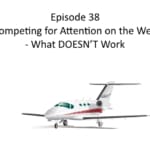

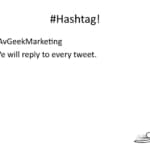
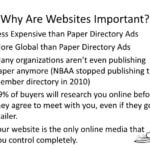

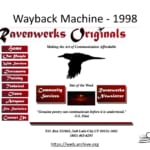
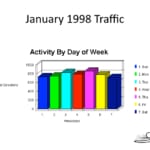

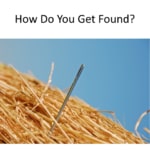


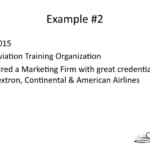
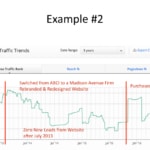

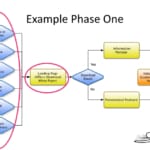
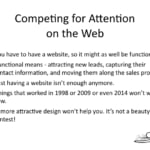
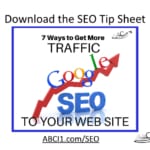
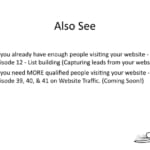
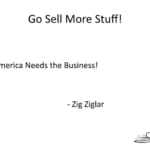
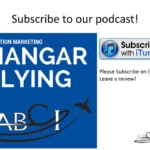





[…] How to Get Attention on the Web […]
[…] How to Get Attention on the Web […]
[…] How to Get Attention on the Web […]
[…] How to Get Attention on the Web […]
[…] How to Get Attention on the Web […]
[…] How to Get Attention on the Web […]
[…] How to Get Attention on the Web […]
[…] How to Get Attention on the Web […]
[…] How to Get Attention on the Web […]